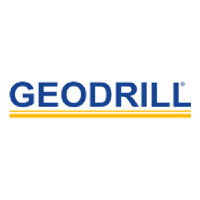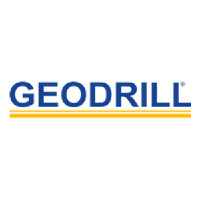
Geodrill Ltd
TSX:GEO


| US |

|
Johnson & Johnson
NYSE:JNJ
|
Pharmaceuticals
|
| US |

|
Berkshire Hathaway Inc
NYSE:BRK.A
|
Financial Services
|
| US |

|
Bank of America Corp
NYSE:BAC
|
Banking
|
| US |

|
Mastercard Inc
NYSE:MA
|
Technology
|
| US |

|
UnitedHealth Group Inc
NYSE:UNH
|
Health Care
|
| US |

|
Exxon Mobil Corp
NYSE:XOM
|
Energy
|
| US |

|
Pfizer Inc
NYSE:PFE
|
Pharmaceuticals
|
| US |

|
Palantir Technologies Inc
NYSE:PLTR
|
Technology
|
| US |

|
Nike Inc
NYSE:NKE
|
Textiles, Apparel & Luxury Goods
|
| US |

|
Visa Inc
NYSE:V
|
Technology
|
| CN |

|
Alibaba Group Holding Ltd
NYSE:BABA
|
Retail
|
| US |

|
JPMorgan Chase & Co
NYSE:JPM
|
Banking
|
| US |

|
Coca-Cola Co
NYSE:KO
|
Beverages
|
| US |

|
Walmart Inc
NYSE:WMT
|
Retail
|
| US |

|
Verizon Communications Inc
NYSE:VZ
|
Telecommunication
|
| US |

|
Chevron Corp
NYSE:CVX
|
Energy
|
Utilize notes to systematically review your investment decisions. By reflecting on past outcomes, you can discern effective strategies and identify those that underperformed. This continuous feedback loop enables you to adapt and refine your approach, optimizing for future success.
Each note serves as a learning point, offering insights into your decision-making processes. Over time, you'll accumulate a personalized database of knowledge, enhancing your ability to make informed decisions quickly and effectively.
With a comprehensive record of your investment history at your fingertips, you can compare current opportunities against past experiences. This not only bolsters your confidence but also ensures that each decision is grounded in a well-documented rationale.
Do you really want to delete this note?
This action cannot be undone.

| 52 Week Range |
2.51
3.95
|
| Price Target |
|
We'll email you a reminder when the closing price reaches CAD.
Choose the stock you wish to monitor with a price alert.

|
Johnson & Johnson
NYSE:JNJ
|
US |

|
Berkshire Hathaway Inc
NYSE:BRK.A
|
US |

|
Bank of America Corp
NYSE:BAC
|
US |

|
Mastercard Inc
NYSE:MA
|
US |

|
UnitedHealth Group Inc
NYSE:UNH
|
US |

|
Exxon Mobil Corp
NYSE:XOM
|
US |

|
Pfizer Inc
NYSE:PFE
|
US |

|
Palantir Technologies Inc
NYSE:PLTR
|
US |

|
Nike Inc
NYSE:NKE
|
US |

|
Visa Inc
NYSE:V
|
US |

|
Alibaba Group Holding Ltd
NYSE:BABA
|
CN |

|
JPMorgan Chase & Co
NYSE:JPM
|
US |

|
Coca-Cola Co
NYSE:KO
|
US |

|
Walmart Inc
NYSE:WMT
|
US |

|
Verizon Communications Inc
NYSE:VZ
|
US |

|
Chevron Corp
NYSE:CVX
|
US |
This alert will be permanently deleted.
Geodrill Ltd
Geodrill Ltd. engages in the provision of mineral exploration drilling services. The firm operates a fleet of Multi-Purpose, Core, Air-core and Grade Control drill rigs. The firm's geographic segments include Ghana and Outside Ghana. The multi-purpose rigs can perform both reverse circulation (RC) and diamond core (Core) drilling and can switch from one to the other. Multi-purpose rigs provide clients with RC drilling and the depth of Core drilling without the need to have two different drill rigs on site. Its drilling services also include water borehole and directional drilling. The firm's products include EDM 2000 multi-purpose, Sandvik DE 820 multi-purpose, Sandvik DE 810 multi-purpose, Sandvik DE 710 core, Austex X350 RC/Grade Control and Austex X300 Air-core. Its rigs and support equipment also include a fleet of boosters and auxiliary compressors. The firm has a fleet of approximately 40 drill rigs operating in Africa. The company has operations in Ghana, Burkina Faso, Cote d'Ivoire, Mali and Zambia.

Geodrill Ltd. engages in the provision of mineral exploration drilling services. The firm operates a fleet of Multi-Purpose, Core, Air-core and Grade Control drill rigs. The firm's geographic segments include Ghana and Outside Ghana. The multi-purpose rigs can perform both reverse circulation (RC) and diamond core (Core) drilling and can switch from one to the other. Multi-purpose rigs provide clients with RC drilling and the depth of Core drilling without the need to have two different drill rigs on site. Its drilling services also include water borehole and directional drilling. The firm's products include EDM 2000 multi-purpose, Sandvik DE 820 multi-purpose, Sandvik DE 810 multi-purpose, Sandvik DE 710 core, Austex X350 RC/Grade Control and Austex X300 Air-core. Its rigs and support equipment also include a fleet of boosters and auxiliary compressors. The firm has a fleet of approximately 40 drill rigs operating in Africa. The company has operations in Ghana, Burkina Faso, Cote d'Ivoire, Mali and Zambia.
Revenue Growth: Q3 revenue was $39 million, up 14% year-on-year, driven by expansion in South America.
Margin Pressure: Gross profit margin fell sharply to 6% from 24% a year ago, with West Africa accounting for most of the decline due to wet season, wage inflation, and currency effects.
South America Expansion: Rapid rig growth in South America led to upfront costs and operational delays, but management expects significant improvement and higher revenue in Q4 as new projects ramp up.
Net Loss Reported: The company posted a net loss of $1.5 million for Q3 compared to net income of $2.6 million last year.
Strong Balance Sheet: Ended the quarter with $129 million in shareholders' equity and $11.1 million net cash; management will reconsider dividends or buybacks when profitability returns.
Utilization Rebounding: Fleet utilization is climbing, currently around 72% and expected to trend to 75% as operations normalize.
Positive Outlook: Management is confident that margin recovery and improved performance will materialize in Q4, with a robust contract pipeline and strong commodity prices.







































